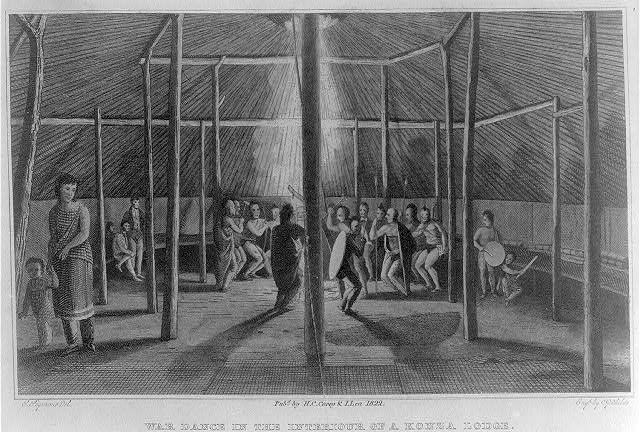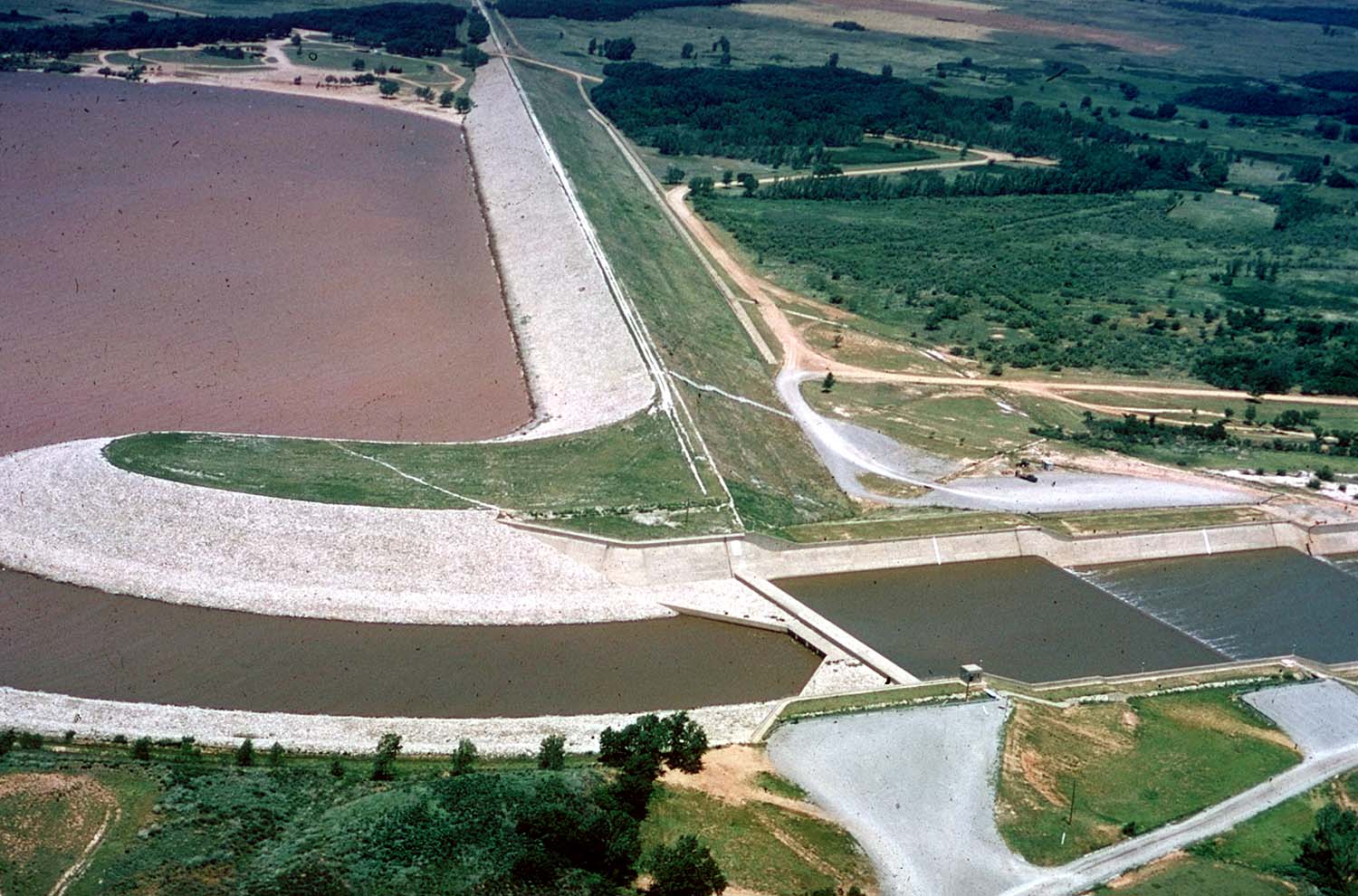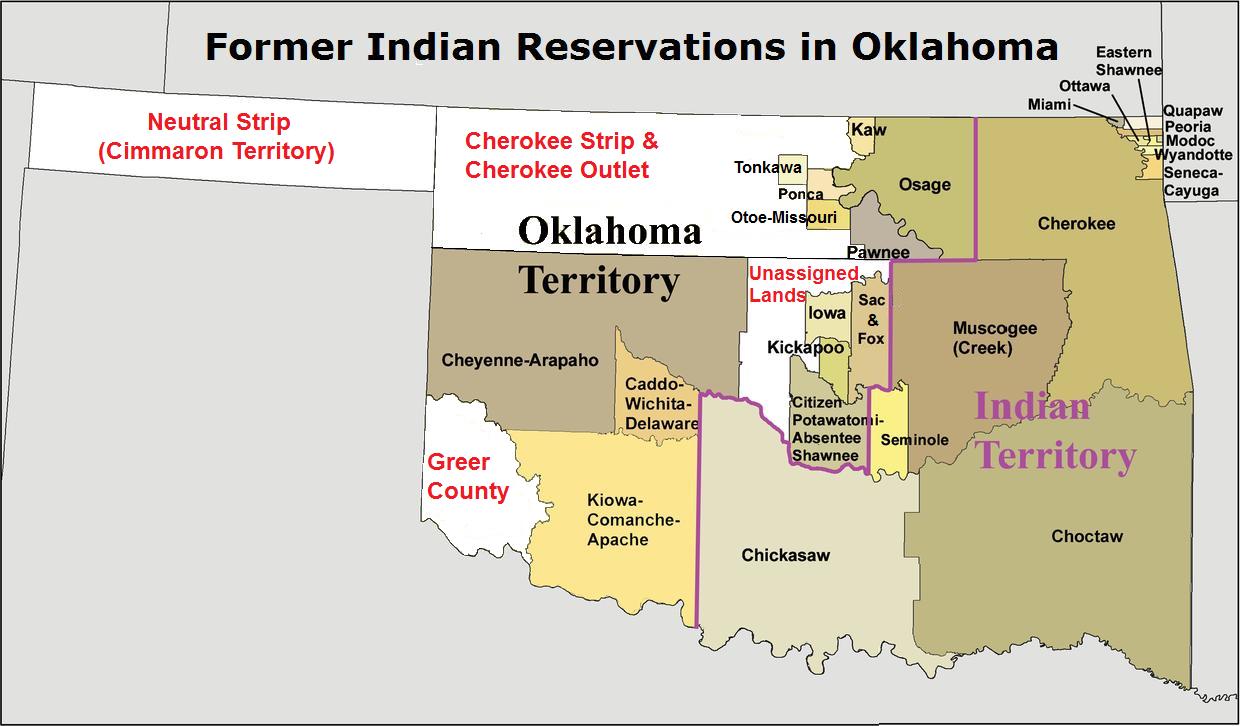|
Woods County, Oklahoma
Woods County is a County (United States), county located in the northwestern part of the U.S. state of Oklahoma. As of the 2020 United States census, 2020 census, the population was 8,624. Its county seat is Alva, Oklahoma, Alva. The county is named after Samuel Newitt Wood, a renowned Kansas populist.Reichenberger, Donovan"Woods County,"''Encyclopedia of Oklahoma History and Culture'', Oklahoma Historical Society, 2009. Accessed April 5, 2015. History The Burnham site in Woods County is a Clovis culture#Evidence of human habitation before Clovis, pre-Clovis site, that is, an archaeological site dating before 11,000 years ago. The region of Woods County, Oklahoma, was home to the Antelope Creek Phase of Southern Plains Villagers, a precontact culture of Native Americans in the United States, Native Americans, who are related to the Wichita and Affiliated Tribes. An early European explorer of the area now contained within Woods County was George C. Sibley, who traveled through i ... [...More Info...] [...Related Items...] OR: [Wikipedia] [Google] [Baidu] |
BancCentral National Association
BancCentral National Association (formerly Central National Bank) is a commercial bank based in Alva, Oklahoma. It was built in 1901 and was listed on the National Register of Historic Places in 1984. It had been owned and operated by the Myers family since 1919. History The Alva National Bank was established in 1899. Officers of Alva National Bank in 1907 were George A. Harbaugh president, and J.H. Schaefer, vice president. During the years between 1907 and 1913, the Alva Security Bank purchased Alva National Bank with Harbaugh as bank president. In August 1913, G.A. Harbaugh, E. Anderson, T.F. Fennessey and H.E. Noble, owners of Alva Security, organized a new banking institution under the name Central State Bank. The newly named bank continued to operate at the location of the former Alva Security Bank. Central State Bank was considered a "state bank," the deposits were insured by the Depositors Guaranty of the State of Oklahoma. On October 31, 1917, Central State Bank absorbe ... [...More Info...] [...Related Items...] OR: [Wikipedia] [Google] [Baidu] |
Arkansas River
The Arkansas River is a major tributary of the Mississippi River. It generally flows to the east and southeast as it traverses the U.S. states of Colorado, Kansas, Oklahoma, and Arkansas. The river's source basin lies in Colorado, specifically the Arkansas River Valley. The headwaters derive from the snowpack in the Sawatch Range, Sawatch and Mosquito Range, Mosquito mountain ranges. It flows east into Kansas and finally through Oklahoma and Arkansas, where it meets the Mississippi River. At , it is the sixth-longest river in the United States, the second-longest tributary in the Mississippi–Missouri River, Missouri system, and the List of river systems by length, 47th longest river in the world. Its origin is in the Rocky Mountains in Lake County, Colorado, near Leadville, Colorado, Leadville. In 1859, Placer mining, placer gold discovered in the Leadville area brought thousands seeking to strike it rich, but the easily recovered placer gold was quickly exhausted. The Arkansa ... [...More Info...] [...Related Items...] OR: [Wikipedia] [Google] [Baidu] |
US 281
U.S. Route 281 (US 281) is a north–south United States Numbered Highway. At it is the longest continuous three-digit U.S. Route. The highway's northern terminus is at the International Peace Garden, north of Dunseith, North Dakota, at the Canadian border, where it continues as Highway 10. The route between Dunseith and the border is shared with North Dakota Highway 3. US 281 has two southern termini. The western terminus, known as International Blvd. in Hidalgo, begins from the McAllen-Hidalgo International Bridge. The southern eastern terminus of US 281 is in Brownsville, Texas, just short of the Mexican border ending on Bus. 77. The two spurs come together at South Cage Blvd in Las Milpas, Texas going north into Pharr, Texas. Thus, US 281 is the only continuous three-digit US route to extend from the Canadian border to the Mexican border. The original ''Military Telegraph Road'' was incorporated into the US-281 route. US 281 is a "child" ... [...More Info...] [...Related Items...] OR: [Wikipedia] [Google] [Baidu] |
US 64
U.S. Route 64 (US 64) is an east–west United States highway that runs for 2,281 miles (3,672 km) from Nags Head in eastern North Carolina to just southwest of the Four Corners in northeast Arizona. The western terminus is at U.S. Route 160 in Teec Nos Pos, Arizona. The highway's eastern terminus is at NC 12 and U.S. Route 158 at Whalebone Junction, North Carolina. Major cities served along US 64's route include Tulsa, Oklahoma, Conway, Arkansas, Memphis and Chattanooga, Tennessee, and Raleigh and Rocky Mount, North Carolina. Route description , - , AZ , , - , NM , , - , OK , , - , AR , , - , TN , , - , NC , , - , Total , Arizona US 64's western terminus is Teec Nos Pos, Arizona, at US 160. From there, it runs southeast through sparse ranch land for about to the New Mexico state line. New Mexico Within New Mexico, US 64 runs through Farmington, Taos, Angel Fire, Eagle Nest, Cimarron, and Raton. As it runs through Raton, it is co-signed with ... [...More Info...] [...Related Items...] OR: [Wikipedia] [Google] [Baidu] |
Kansas
Kansas ( ) is a landlocked U.S. state, state in the Midwestern United States, Midwestern region of the United States. It borders Nebraska to the north; Missouri to the east; Oklahoma to the south; and Colorado to the west. Kansas is named after the Kansas River, in turn named after the Kaw people, Kansa people. Its List of capitals in the United States, capital is Topeka, Kansas, Topeka, and its List of cities in Kansas, most populous city is Wichita, Kansas, Wichita; however, the largest urban area is the bi-state Kansas City metropolitan area split between Kansas and Missouri. For thousands of years, what is now Kansas was home to numerous and diverse Plains Indians, Indigenous tribes. The first settlement of non-indigenous people in Kansas occurred in 1827 at Fort Leavenworth. The pace of settlement accelerated in the 1850s, in the midst of political wars over the Slavery in the United States, slavery debate. When it was officially opened to settlement by the U.S. governm ... [...More Info...] [...Related Items...] OR: [Wikipedia] [Google] [Baidu] |
Woodward County, Oklahoma
Woodward County is a County (United States), county located in the U.S. state of Oklahoma. As of the 2020 United States census, 2020 census, the population was 20,470. Its county seat is Woodward, Oklahoma, Woodward. Woodward County comprises the Woodward, OK Micropolitan Statistical Area, micropolitan statistical area. Woodward County was originally known as "N" County and was composed of present-day Woodward County and portions of Harper, Ellis, and Woods County. Before its division at statehood, Woodward County, then 60 miles square, was the westernmost county of the Cherokee Outlet and adjoined Texas and the Oklahoma Panhandle on the west and Kansas on the north. Political pressure applied by William H. Murray during Oklahoma's Constitutional Convention resulted in the reduction of the size of Woodward County to its present boundaries. It is unknown exactly whom the county (and the town) is named after, but the two leading candidates are Brinton W. Woodward, a Santa Fe rail ... [...More Info...] [...Related Items...] OR: [Wikipedia] [Google] [Baidu] |
Alfalfa County, Oklahoma
Alfalfa County is a county located in the U.S. state of Oklahoma. As of the 2020 census, the population was 5,699. The county seat is Cherokee. Alfalfa County was formed at statehood in 1907 from Woods County. The county is named after both the alfalfa crops grown there and William H. "Alfalfa Bill" Murray, the president of the Oklahoma Constitutional Convention and ninth governor of Oklahoma. He was instrumental creating the county from the original, much larger Woods County.Dianna Everett, "Alfalfa County," ''Encyclopedia of Oklahoma History and Culture''. Accessed January 19, 2016. History Early history |
Major County, Oklahoma
Major County is a county in the northwestern part of the U.S. state of Oklahoma. As of the 2020 census, its population was 7,782. Its county seat is Fairview. The county was created in 1907. Located in northwestern Oklahoma, Major County is bounded by Woods and Alfalfa counties in the north, Garfield County on the east, Kingfisher, Blaine, and Dewey on the south, and Woodward on the west. Major County has 957.87 square miles of land and water. It is drained by the North Canadian and Cimarron Rivers, and the Eagle Chief, Griever, and Sand Creeks. History Upon statehood in 1907, Major County was created from the southern part of a territorial county.Peterson-Veatch, Ross"Major County,"''Encyclopedia of Oklahoma History and Culture'', Oklahoma Historical Society, 2009. Accessed April 4, 2015. Fairview, which had been settled following the Land Run of 1893, was designated the county seat, and voters reaffirmed the choice on December 22, 1908.Wilson, Linda D"Fairview,"''E ... [...More Info...] [...Related Items...] OR: [Wikipedia] [Google] [Baidu] |
Chisholm Trail
The Chisholm Trail ( ) was a stock trail and wagon route used in the post-Civil War era to drive cattle overland from ranches in southern Texas, across the Red River into Indian Territory, and northward to rail stops in Kansas. The trail consisted of a pathway established by Black Beaver in 1861 and a wagon road established by Jesse Chisholm around 1864. "The Chisholm Wagon Road went from Chisholm's trading post on the south Canadian River (north of Fort Arbuckle) to the Cimarron River crossing, to the Arkansas River at the future site of Wichita where Chisholm had another trading post and on north to Abilene," according to the Kraisingers. By 1869, the entire trail from Texas to Kansas became known as the Chisholm Trail. Overview Texas ranchers using the Chisholm Trail had their cowboys start cattle drives from either the Rio Grande area or San Antonio. They joined the Chisholm Trail at the Red River, at the border between Texas and the Oklahoma Territory. They contin ... [...More Info...] [...Related Items...] OR: [Wikipedia] [Google] [Baidu] |
Treaty Of New Echota
The Treaty of New Echota was a treaty signed on December 29, 1835, in New Echota, Georgia, by officials of the United States government and representatives of a minority Cherokee political faction, the Treaty Party. The treaty established terms for the Cherokee Nation to cede its territory in the southeast and move west to the Indian Territory. Although the treaty was not approved by the Cherokee National Council nor signed by Principal Chief John Ross, it was amended and ratified in March 1836, and became the legal basis for the forcible removal known as the Trail of Tears carried out in 1838-1839. Background Early discussions By the late 1820s, the territory of the Cherokee Indian nation lay almost entirely in northwestern Georgia, with small parts in Tennessee, Alabama, and North Carolina. It extended across most of the northern border and all of the border with Tennessee. An estimated 16,000 Cherokee people lived in this territory. Others had emigrated west to present ... [...More Info...] [...Related Items...] OR: [Wikipedia] [Google] [Baidu] |
Cherokee Nation
The Cherokee Nation ( or ) is the largest of three list of federally recognized tribes, federally recognized tribes of Cherokees in the United States. It includes people descended from members of the Cherokee Nation (1794–1907), Old Cherokee Nation who relocated, due to increasing pressure, from the Southeast to Indian Territory and Cherokees who were forced to relocate on the Trail of Tears. The tribe also includes descendants of Cherokee Freedmen and Natchez Nation. As of 2024, over 466,000 people were enrolled in the Cherokee Nation. Headquartered in Tahlequah, Oklahoma, the Cherokee Nation has a Indian reservation, reservation spanning 14 counties in the northeastern corner of Oklahoma. These are Adair County, Oklahoma, Adair, Cherokee County, Oklahoma, Cherokee, Craig County, Oklahoma, Craig, Delaware County, Oklahoma, Delaware, Mayes County, Oklahoma, Mayes, McIntosh County, Oklahoma, McIntosh, Muskogee County, Oklahoma, Muskogee, Nowata County, Oklahoma, Nowata, Ottaw ... [...More Info...] [...Related Items...] OR: [Wikipedia] [Google] [Baidu] |
Cherokee Outlet
The Cherokee Outlet, or Cherokee Strip, was located in what is now the state of Oklahoma in the United States. It was a parcel of land south of the Oklahoma–Kansas border between 96th meridian west, 96 and 100th meridian west, 100°W. The Cherokee Outlet was created in 1836. The United States forced the Cherokee Nation of Native Americans in the United States, Indians to cede to the United States all lands east of the Mississippi River in exchange for a Indian reservation, reservation and an "outlet" in Indian Territory (later Oklahoma). At the time of its creation, the Cherokee Outlet was about long. The cities of Enid, Oklahoma, Enid, Woodward, Oklahoma, Woodward, Ponca City, Oklahoma, Ponca City, and Perry, Oklahoma, Perry were later founded within the boundaries of what had been the Cherokee Outlet. The Cherokee Strip (Kansas), Cherokee Strip was a wide piece of land running along the northern border of much of the Cherokee Outlet. It was the result of a surveying error. ... [...More Info...] [...Related Items...] OR: [Wikipedia] [Google] [Baidu] |






